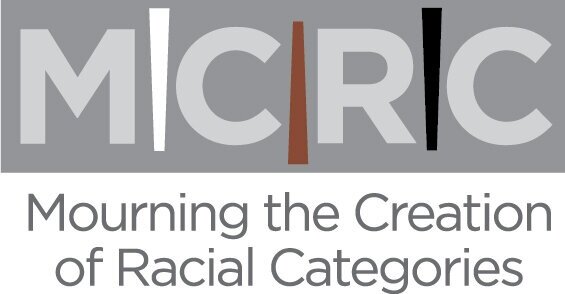Which question does Grouping C answer? (answer key at bottom of page)
1. In the United States, how do we determine who is black and who is white?
2. How did white become the free and black the enslaved?
3. White is “the standard.” What does that mean?
4. Why White?
5. When words are inadequate, how can the arts help us feel the emotions of race?
6. If you do not identify as black or white, where do you fit into the conversation about race?
7. How did white become the pure category and black the contaminating one?
By Lisa Link Illustration/Design. Commissioned by the MCRC Project. Photographs (left to right) by Chris Caldeira) U.S. Bureau of the Census, Chris Caldeira, , Sharon Jones,, and Missy Gish.
Swaddled By a Category
All people who have ever lived in the lands that we call the United States share something in common: the experience of being labeled as a race and divided into unequally valued racial categories. That label is presented at birth and shapes our lives in profound ways until we die.
*Although people are now allowed to check more than one of the five official racial categories, only 3.4 percent do so.
What is Your Race?
Currently the US officially recognizes five racial categories and one ethnic category (Hispanic). For the most part, the United States has succeeded in getting its 331 million people to self-classify as one race.* While these choices appear to be clear cut, beneath the surface is a deeper story of convincing, forcing and enticing a mind-boggling number of culturally diverse peoples to “join” a category.
Created by Joan Ferrante and India Sada. Graphic Artist, Tabitha Kelly
Signature Traumas
“This idea of race has been in our country for the past 400 years, and yet we truly don’t understand it.” – Emanuel Picazo
Every category has its unique traumas that can be traced to actions carried out over 100s of years to separate and elevate the White category relative to categories deemed nonWhite. These separations carried out in the most sorrowful to callous of ways have left each category resisting the legacy of these actions.
answer key
grouping c answers question 6
If you do not identify as black or white, where do you fit into the conversation about race?




